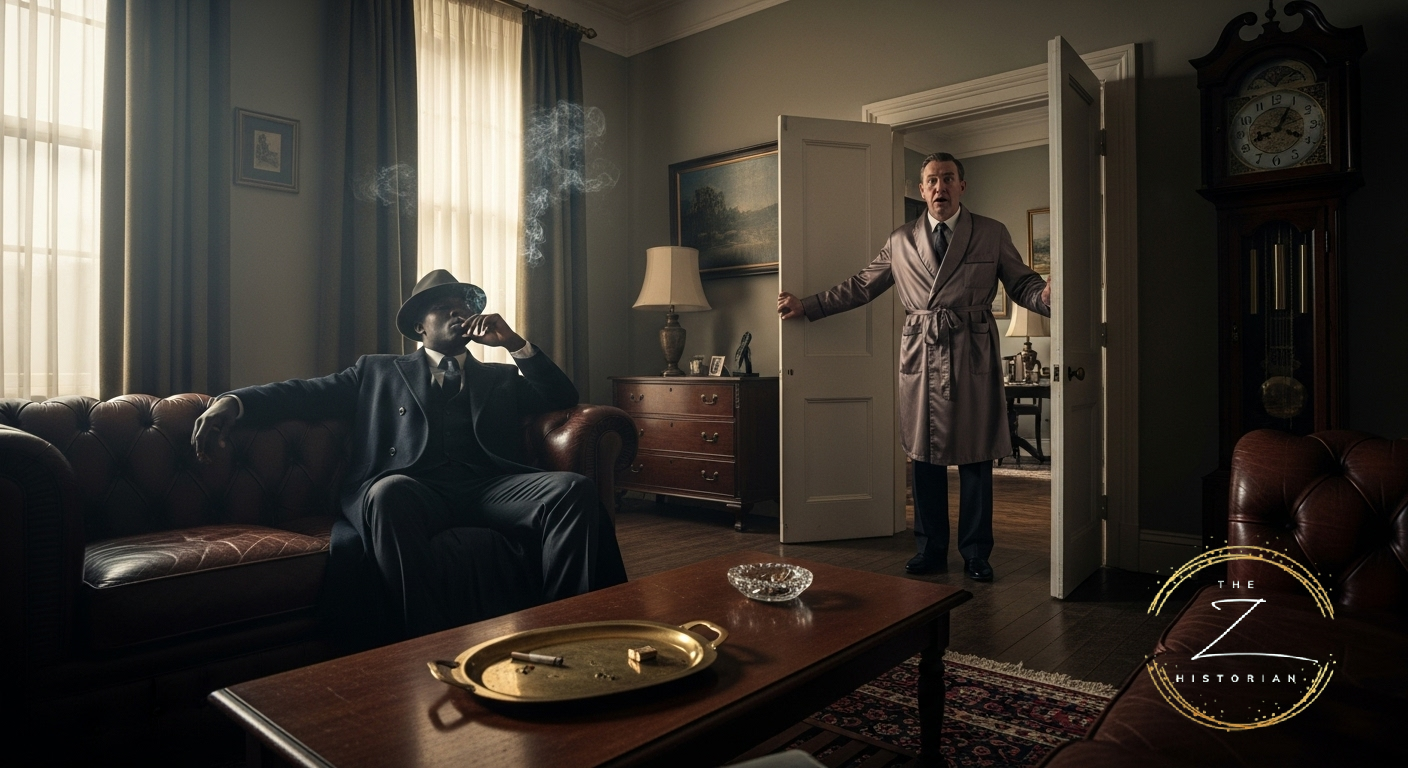THE MAN WHO WALKED THROUGH WALLS... A.K.A "BLACK YESU"

They called him "The Black Yesu"
And in the days just before Zambia's independence, he appeared—like a ghost—in the lounge of Prime Minister Roy Welensky.
It was early. Quiet.
In the dying days of British colonialism, racial tension was high.
The Prime Minister stepped into his lounge—and froze.
No guards alerted.
No doors broken.
No windows shattered.
Just a man… seated calmly in his armchair.
Eyes unwavering.
Like he'd always belonged there.
How did he get in unnoticed?
Was it witchcraft?
Who was this man?
The facts were that the mysterious figure was born in Kalabo in 1927.
He crossed oceans and empires to study in Delhi and Atlanta—gathering not just degrees, but ambition.
He returned to Zambia not as a politician... but as something akin to a prophet. They called him 'Black Yesu'—not for blasphemy, but for his boldness.
After Zambia's independence in 1964, he served as the 1st Minister of Commerce, Trade, and Industry in Kenneth Kaunda's first Cabinet.
In 1967, he resigned and formed his own Party called the United Party (UP).
In 1968, in Lusaka's politically charged Matero Township he warned: 'There are plans to assassinate me.' And soon after, it was announced that UP intended to participate in the general elections and was recruiting from UNIP.
He was arrested on the spot.
So were his allies—Henry Ndhlovu. William Chipango. Dickson Chikulo. Julius
Namakando. Adamson Mushala.
The state thought they'd broken the movement.
But instead, they birthed a myth.
By August 1968, the courts set them free.
Years later, in the era of one-party "participatory democracy," fate spun a strange circle.
President Kenneth Kaunda—his old rival—made a stunning move.
He appointed the same man he once
had arrested as Prime Minister of Zambia, from February 18, 1981, to April 24,
1985.
But the whispers never ceased
"The man wants the presidency... he cannot be controlled...'
The Prime Minister was loved. Feared. Resented.
He electrified Barotseland. He fought for industry. For commerce. For
self-reliance.
Later, he was reassigned abroad—an envoy in Brazil, Peru, Venezuela, and the United States.
Then came Bolivia.
On a Friday, he stood tall, presenting his diplomatic credentials to President Victor Paz Estenssoro.
By Monday night, he was shaking hands at a formal reception...when the unexpected struck.
He collapsed—suddenly, violently.
The room froze. And just like that, the man who had once walked through
walls... had fallen.
Nalumino Mundia died of a heart attack on November 8, 1988.
He was 62 and survived by his wife and six children.
But he was also outlived by something else—a legend that refused to die.
Because while some men seek power.
Others become power.
And Mundia was the latter.
A prophet in the Prime Minister's
seat.
A ghost in colonial halls.
A man whose name still crackles beneath Zambia's soil—
Waiting to be remembered.

Sources:
- Chalo Chatu – Zambia Online Encyclopedia - https://chalochatu.org/Nalumino_Mundia
- UCA Political Science – Zambia (1964–present) - https://uca.edu/politicalscience/home/research-projects/dadm-project/sub-saharan-africa-region/zambia-1964-present/
- Barotse Network Facebook Post (historical recollections)- https://www.facebook.com/Barotsenetwork/posts/hiden-history-about-barotse-nationals-who-contributed-to-zambias-politics-nalumi/1034721323233332/
- Others
Take a rewind through the month of August—from the 1960s onward—to revisit Nalumino Mundia and other key political moments that shaped Zambia's post-independence journey. 👇👇👇
